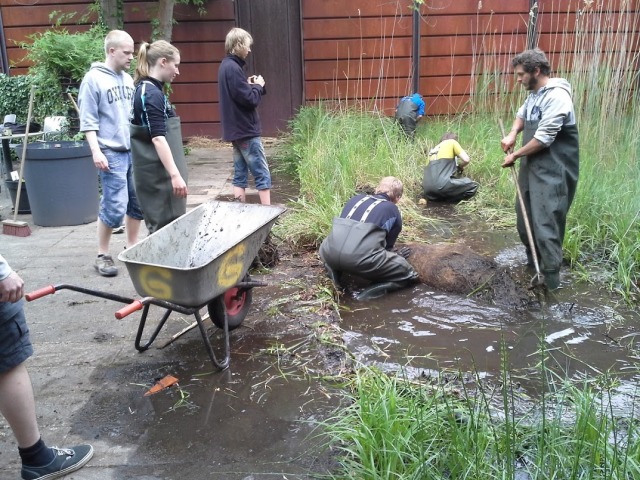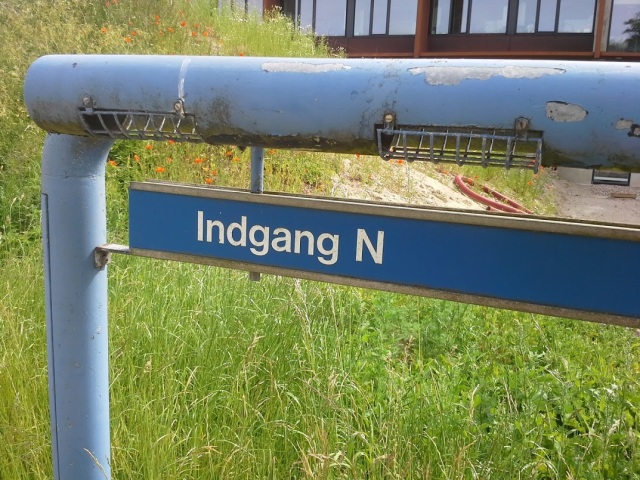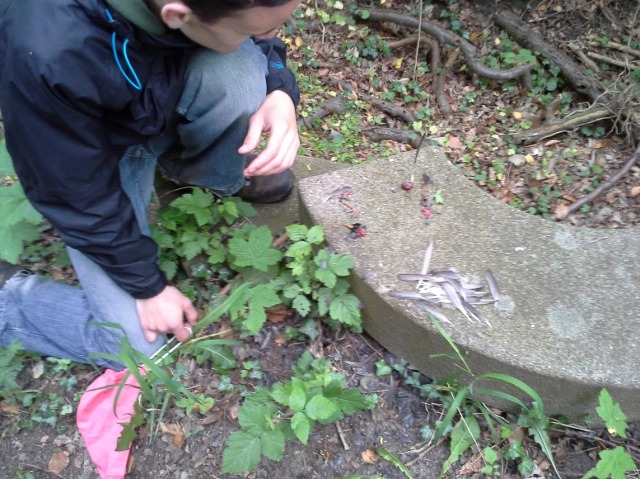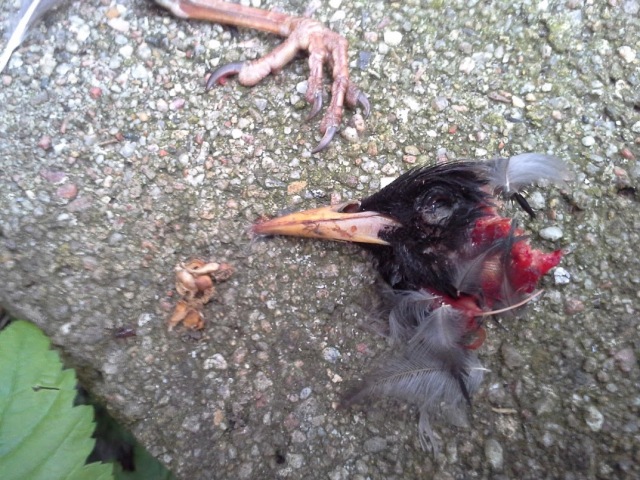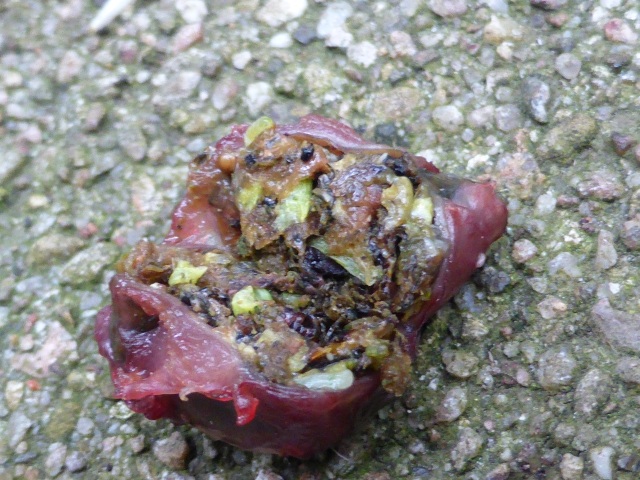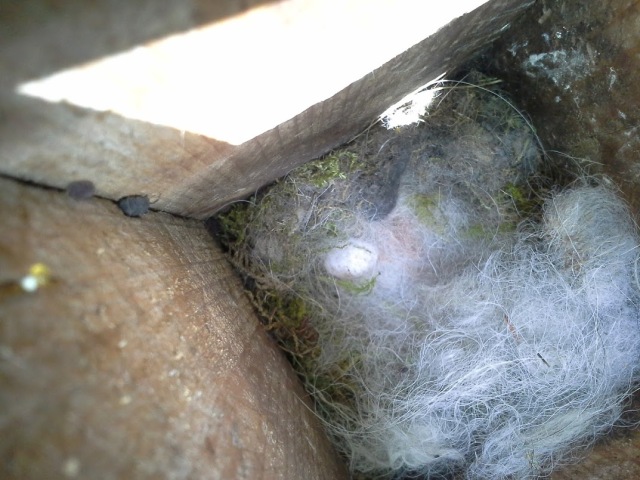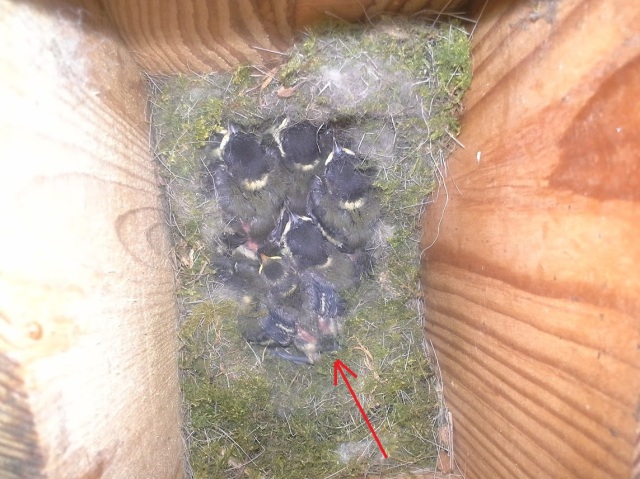Today we spent a few valuable hours in the woods removing the old nest material from our nest boxes. We also carried out some repairs so the boxes are ready for new arrivals, when the spring comes again. This year Kristine is in charge of “The Big Clean Up” and she will be collecting nest material from all 100 nest boxes in small paper bags. Each nest will be dried in a large oven and weighed. This information will help contribute to our understanding of the factors which affect breeding success in Blue tits (blåmejse) and Great tits (musvit).
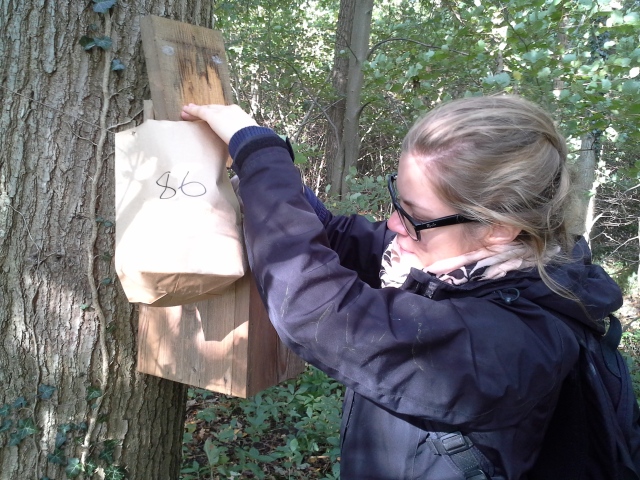
Kristine removes old nest material from box number 86 and collects it for analysis. Photo: Jennifer Lynch.
If you have a nest box at home in your garden, now is the perfect time to clean it out. Once you are sure that the box is empty (no longer in use) you can safely remove the old nest material. Use gloves, as the nests are usually infested with parasites, including fleas, ticks and lice. By removing the old nest material you will encourage the birds to use the box the following year, and reduce the amount of parasites in the nest, giving the new chicks a head start.
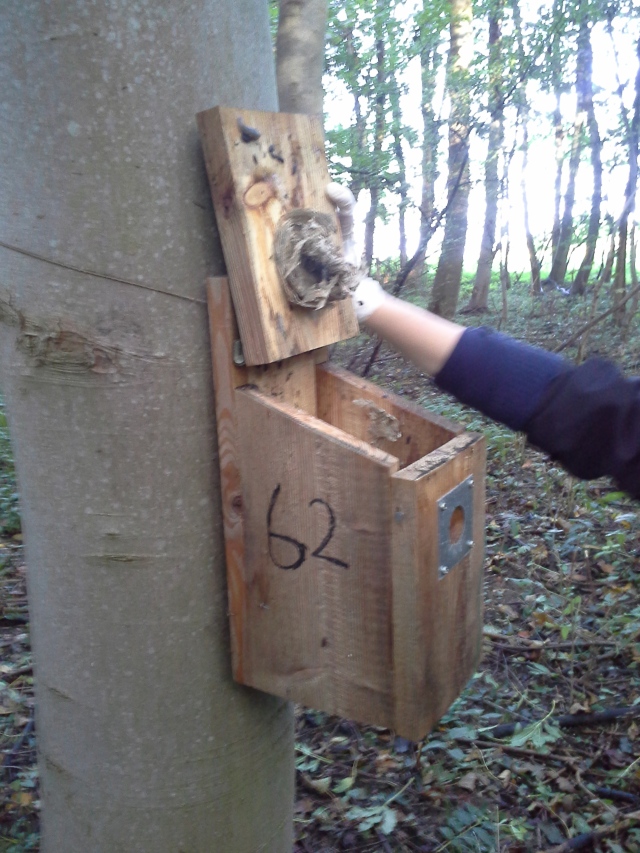
Remains of a wasps nest attached to the lid of box number 62. Photo: Jennifer Lynch
It’s not only birds that use nest boxes during the summer. Nest boxes provide homes for a variety of wildlife, including many species of insects. During our visits we found many garden spiders (korsedderkop), earwigs (ørentvist) and woodlouse (bænkebider). In box 62 we found the remains of a wasps nest. During the summer, when the wasps moved in, our monitors Ane & Kamilla decided to leave them in peace and stopped monitoring this box. Now we can safely remove the interesting construction, to make way for new residents next year (feathered or otherwise!). According to the Cornell Lab of Ornithology, you can prevent wasps moving in by applying a thin layer of cooking spray or soap to the roof of a nest box!
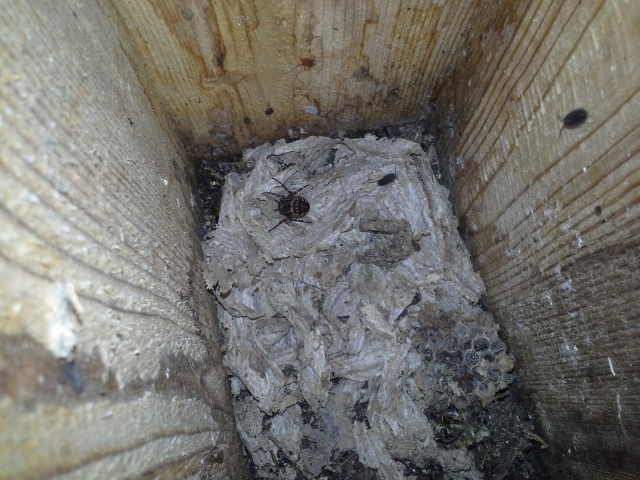
Here you can also see the remains of a wasps nest and a large garden spider (top left). Photo: Jennifer Lynch
During the cold dark months of winter, birds may roost or sleep in nest boxes. Nest boxes provide a safe place, where they are protected from predators, and sheltered from the wind and rain. In one empty nest box we found a small collection of feathers. This may indicate that a bird has been roosting in the box. The small body feathers were grey and orange, not the colour of a blue tit or great tit. Maybe a nuthatch (spætmejse) has been using the box?
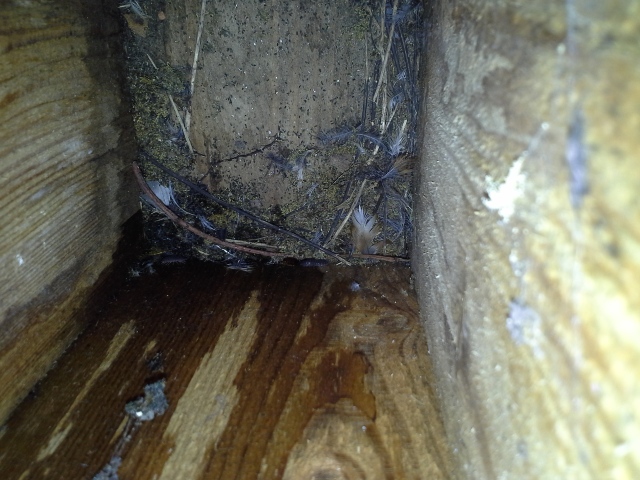
Who has been sleeping in this nest box at night? Photo: Jennifer Lynch
The nest boxes appear to create their own micro climate, especially in the gap between the box and the tree trunk. As we moved some of the boxes, to carry out some repairs we came across a world of activity, especially at box 90 where we found hundreds of woodlouse together with what appeared to be a Hawthorn shield bug (Stor Løvtæge).
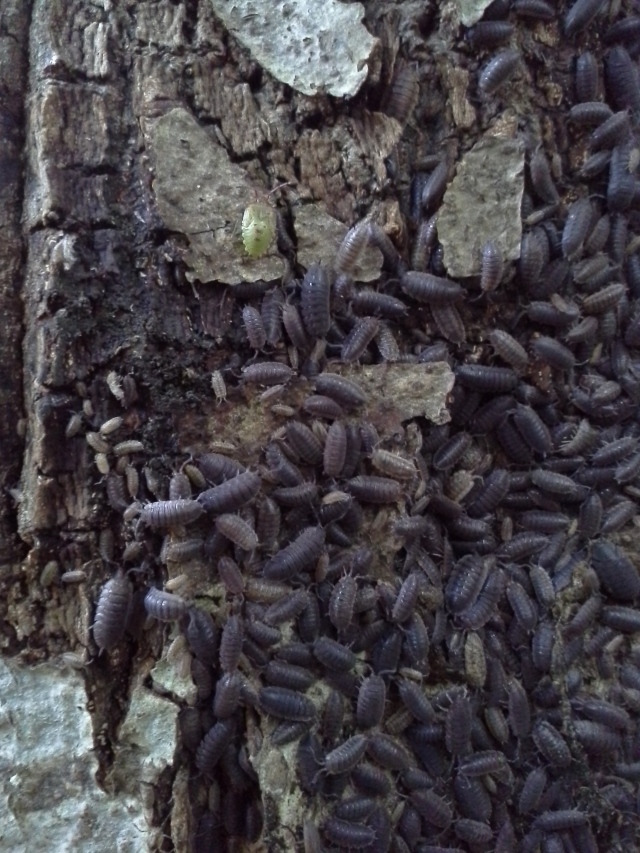
Woodlouse and a possibly Hawthorn shield bug (Stor Løvtæge) on the tree bark behind a nest box. Photo: Jennifer Lynch
Some useful links to mention…
Short video on why and how to clean out nest boxes from the Danish Ornithological Society (DOF) video (in Danish).
Nice key to identifying shield bugs (skjoldbiller) – at this link
How everyone can get involed in monitoring Danish nature – Fugle og Natur









